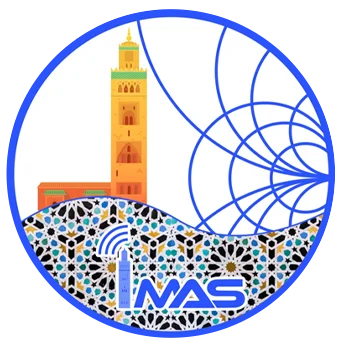- International Microwave & Antennas Symposium (IMAS 2024) October 21-24, 2024 I Marrakech, Morocco

Keynote Speaker 1: Antennas & Microwave Computational and Design Methodologies and Interdisciplinary Applications
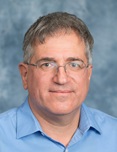
Professor of Electrical and Computer Engineering, Director of Electromagnetics Laboratory, and University Distinguished Teaching Scholar at Colorado State University. Previously, he held assistant/associate-professor positions at the University of Massachusetts Dartmouth and University of Belgrade. His research contributions are in computational and applied electromagnetics. His publications include about 330 journal and conference papers, and textbooks “Electromagnetics” (2010) and “MATLAB-Based Electromagnetics” (2013) with Pearson Prentice Hall and “Conceptual Electromagnetics” (2017) with CRC Press. Prof. Notaros serves as President of the IEEE Antennas and Propagation Society (AP-S), Immediate Past President of the Applied Computational Electromagnetics Society (ACES), Immediate Past Chair of the USNC-URSI Commission B, and Track Editor of the IEEE Transactions on Antennas and Propagation. He served as General Chair of the IEEE APS/URSI 2022 Denver Conference, Chair of the IEEE AP-S Meetings Committee, Chair of the Joint Meetings Committee, and AP-S AdCom member. He was the recipient of the 1999 IEE Marconi Premium, 2005 IEEE MTT-S Microwave Prize, 2022 IEEE Antennas and Propagation Edward E. Altshuler Prize Paper Award, 2019 ACES Technical Achievement Award, 2014 Carnegie Foundation Colorado Professor of the Year Award, 2015 ASEE ECE Distinguished Educator Award, 2015 IEEE Undergraduate Teaching Award, and many other research and teaching awards. He is Fellow of IEEE and ACES.
Keynote Speaker 2: Novel Solutions for Microwave Sensors

received the Ph.D. degree in electronics and computer science from the University of Pavia, Pavia, Italy, in 2000. He held research positions with various universities worldwide, including the Technische Universitaet Darmstadt, Germany; the Universitat de Valencia, Spain; and the Ecole Polytechnique de Montreal, Canada. In 2002, he joined the Department of Electronics, University of Pavia, where he is currently a full professor of electromagnetic fields. He was also a Guest Professor at Tianjin University, China (2015-2017) and a Visiting Professor at Gdansk University of Technology, Poland (2017-2018). His main research interests concern the computational electromagnetics, the substrate integrated waveguide technology, and the use of novel materials and fabrication technologies for microwave circuits (including paper, textile, and 3D printing). He has authored or co-authored more than 180 journal papers and 360 conference papers. He co-edited the book Periodic Structures (Research Signpost, 2006) and co-authored the book Microstrip Lines and Slotlines (Artech House, 2013).
Prof. Bozzi is the 2024 President of the IEEE Microwave Theory and Technology Society (MTT-S). He was an elected Member of the Administrative Committee of MTT-S for years 2017–2022, the Budget Committee Chair in 2023, the MTT-S Treasurer in 2020–2022, the Chair of the Meetings and Symposia Committee for years 2018-2019, and the Secretary of MTT-S in 2016. He was also a member of the General Assembly of the European Microwave Association (EuMA) from 2014 to 2016. He was a Track Editor of the IEEE Transactions on Microwave Theory and Techniques, and an Associate Editor of the IEEE Microwave and Wireless Components Letters, the IET Microwaves, Antennas and Propagation, and the IET Electronics Letters. He was the General Chair of the IEEE MTT-S International Microwave Workshop Series-Advanced Materials and Processes (IMWS-AMP 2017), in Pavia, Italy, 2017, of the inaugural edition of the IEEE International Conference on Numerical Electromagnetic Modeling and Optimization (NEMO2014), in Pavia, Italy, 2014, and of the IEEE MTT-S International Microwave Workshop Series on Millimeter Wave Integration Technologies, in Sitges, Spain, 2011.
Maurizio Bozzi is a Fellow of the IEEE. He received several awards, including the 2015 Premium Award for Best Paper in IET Microwaves, Antennas & Propagation, the 2014 Premium Award for the Best Paper in Electronics Letters, the Best Student Paper Award at the 2016 IEEE Topical Conference on Wireless Sensors and Sensor Networks (WiSNet2016), the Best Paper Award at the 15th Mediterranean Microwave Symposium (MMS2015), the Best Student Award at the 4th European Conference on Antennas and Propagation (EuCAP 2010), the Best Young Scientist Paper Award of the XXVII General Assembly of URSI in 2002, and the MECSA Prize of the Italian Conference on Electromagnetics (XIII RiNEm) in 2000.
Keynote Speaker 3: Net ZERO Radio Communications Use of SWIPT for IoT applications
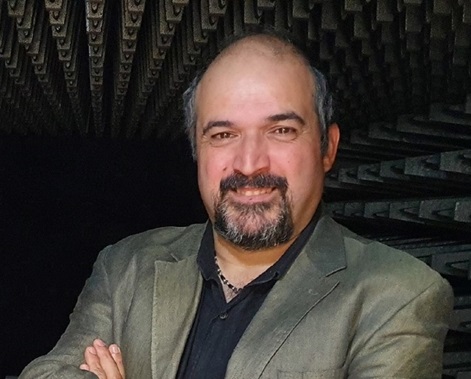
was born in Luanda, Angola, in 1972. He received his Diploma and Doctoral degrees in electronics and telecommunications engineering from the University of Aveiro, Aveiro, Portugal, in 1995 and 2000, respectively.
He is currently a Full Professor and a Senior Research Scientist with the Institute of Telecommunications, University of Aveiro, the director of the Department of Electronics, Telecommunications and Informatics at UA, and an IEEE Fellow. He coauthored Intermodulation in Microwave and Wireless Circuits (Artech House, 2003), Microwave and Wireless Measurement Techniques (Cambridge University Press, 2013), White Space Communication Technologies (Cambridge University Press, 2014) and Wireless Power Transmission for Sustainable Electronics (Wiley, 2020). He has been a reviewer and author of over 400 papers in magazines and conferences. He is the Editor in Chief of the Cambridge Wireless Power Transfer Journal, an associate editor of the IEEE Microwave Magazine, and former associate editor of the IEEE Transactions on Microwave Theory and Techniques and IET Microwaves Antennas and Propagation Journal.
He is the co-inventor of six patents. His main research interests include software-defined radio front-ends, backscatter communications, wireless power transmission, nonlinear distortion analysis, and measurements in microwave/wireless circuits and systems. He has been involved in the design of dedicated radios and systems for newly emerging wireless technologies.
Dr. Borges Carvalho is a member of the IEEE MTT ADCOM, the past chair of the IEEE Portuguese Section, TC-20 and TC-11, and also belongs to the technical committees, TC-25 and TC-26. He is also the Chair of the URSI Commission A (Metrology Group). He was the recipient of the 1995 University of Aveiro and the Portuguese Engineering Association Prize for the best 1995 student at the University of Aveiro, the 1998 Student Paper Competition (Third Place) of the IEEE Microwave Theory and Techniques Society (IEEE MTT-S) International Microwave Symposium (IMS), and the 2000 IEE Measurement Prize.
He is a Distinguished Lecturer for the RFID Council and was a previous Distinguished Microwave Lecturer for the IEEE Microwave Theory and Techniques Society. In 2023 he is the IEEE-MTT President.
Keynote Speaker 4: NASA Technologies to Explore The Universe
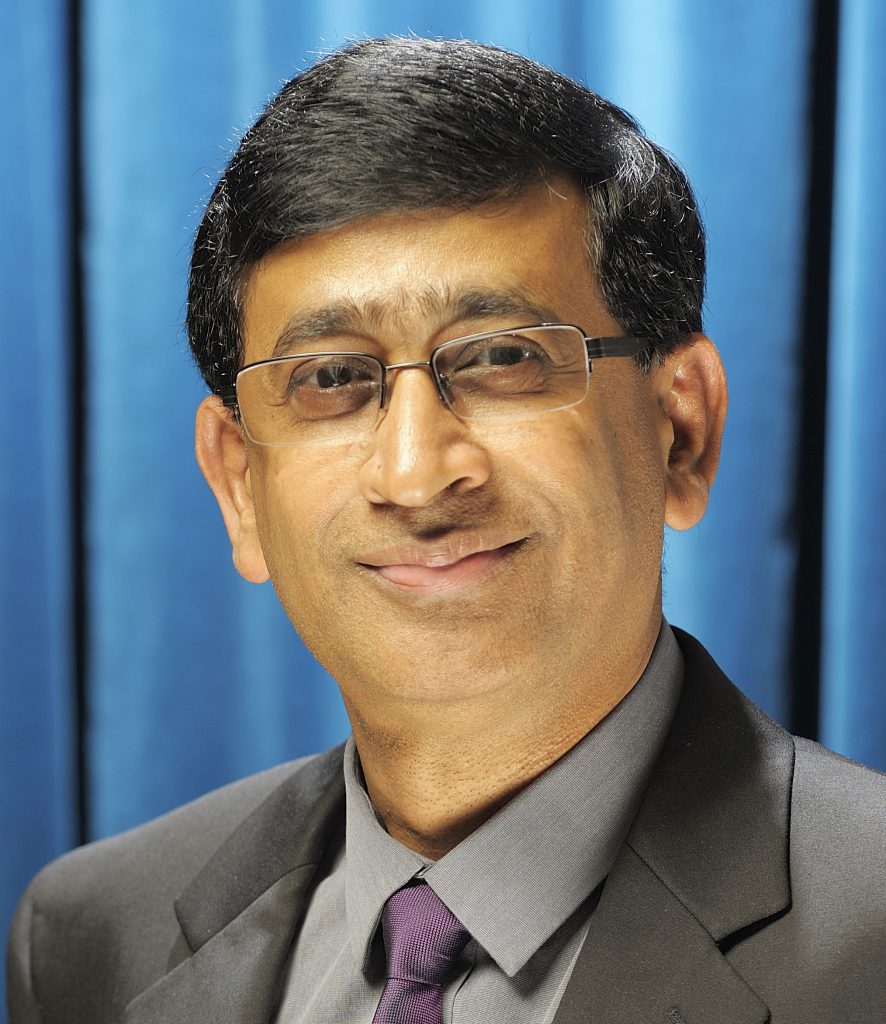
Chattopadhyay is a Senior Scientist at the NASA’s Jet Propulsion Laboratory (JPL), California Institute of Technology and a Visiting Professor at the California Institute of Technology (Caltech), Pasadena, USA. He has been a BEL Distinguished Visiting Chair Professor at the Indian Institute of Science, Bangalore, India and an Adjunct Professor at the Indian Institute of Technology, Kharagpur, India. He received the Ph.D. degree in electrical engineering from the California Institute of Technology (Caltech), Pasadena, in 2000. He is a Fellow of IEEE (USA) and IETE (India), Track Editor of the IEEE Transactions on Antennas and Propagation, an IEEE Distinguished Lecturer, and the president-Elect for IEEE MTT-S for 2024.
His research interests include microwave, millimeter-wave, and terahertz receiver systems and radars, and development of space instruments for the search for life beyond Earth.
He has more than 350 publications in international journals and conferences and holds more than twenty patents. He also received more than 35 NASA technical achievement and new technology invention awards. He received the NASA-JPL People Leadership Award in 2023, IEEE Region-6 Engineer of the Year Award in 2018, Distinguished Alumni Award from the Indian Institute of Engineering Science and Technology (IIEST), India in 2017. He was the recipient of the best journal paper award in 2020 and 2013 by IEEE Transactions on Terahertz Science and Technology, best paper award for antenna design and applications at the European Antennas and Propagation conference (EuCAP) in 2017, and IETE Biman Bihari Sen Memorial Award in 2022 and IETE Prof. S. N. Mitra Memorial Award in 2014.
Keynote Speaker 5: Flexible, Wearable, Disposable Wireless Communication and Sensing Systems Through Additive manufacturing

received his MS and PhD degrees in electrical engineering from Carleton University, Canada in 2004 and 2009 respectively. He was an NSERC Alexander Graham Bell Graduate scholar at Carleton University from 2007 till 2009 and an NSERC postdoctoral Fellow in 2009-2010 at Royal Military College Canada and KAUST. In August 2010, he joined the Electrical and Computer Engineering Program at KAUST, where he is currently a Full Professor, Chair of the ECE Program and the Principal Investigator of IMPACT Lab. He was an invited researcher at the VTT Micro-Modules Research Center (Oulu, Finland) in 2006. His research work has won best paper awards in IEEE ICMAC 2021, IEEE IMS 2016, IEEE MECAP 2016, IEEE EuWiT 2008, first prize in IEEE IMS 2019 3MT competition and IEEE AP-S Design Competition 2022, finalist/honorable mention prizes in IEEE AP-S Design Competition 2020, IEEE IMS 2017 (3MT competition), IEEE IMS 2014, IEEE APS 2005 and R. W. P. King prize for journal papers in IEEE TAP 2017 and 2020. He has been selected as the Distinguished Lecturer for IEEE AP-S (2022-2024). He has won the Kings Prize for the best innovation of the year (2018) for his work on sensors for the oil industry. He was given the Ottawa Centre of Research Innovation (OCRI) Researcher of the Year Award in 2008 in Canada. His work on Wireless Dosimeter won the ITAC SMC Award at Canadian Microelectronics Corporation TEXPO in 2007. Prof. Shamim also won numerous business-related awards, including 1st prize in Canada’s national business plan competition and was awarded OCRI Entrepreneur of the year award in 2010. He is an author/co-author of 325 international publications, an inventor on 35 patents and has given over 100 invited talks at various international forums. His research interests are in innovative antenna designs and their integration strategies with circuits and sensors for flexible and wearable wireless sensing systems through a combination of CMOS and additive manufacturing technologies. He is a Fellow of IEEE, founded the first IEEE AP/MTT chapter in Saudi Arabia (2013) and served on the editorial board of IEEE Transactions on Antennas and Propagation (2013-2019), and as a Guest Editor for IEEE AWPL Special issue (2019), and an Associate Editor for IEEE Journal of Electromagnetics, RF and Microwaves in Medicine and Biology (2020-2024). He is the Vice Chair for IEEE APS MGA Committee (Jan 2024-current). He has served on numerous IEEE committees such as IEEE Technical committees on Antenna Measurements (AP-S), Microwave Controls (MTT-S 13), and Additive Manufacturing (CRFID).
With the advent of wearable sensors and internet of things (IoT), there is a new focus on electronics which can be bent so that they can be worn or mounted on non-planar objects. Due to large volume (billions of devices), there is a requirement that the cost is extremely low, to the extent that they become disposable. The flexible and low-cost aspects can be addressed through additive manufacturing technologies such as inkjet and screen printing. This talk introduces additive manufacturing as an emerging technique to realize low cost, flexible and wearable wireless communication and sensing systems. The ability to print electronics on unconventional mediums such as plastics, papers, and textiles has opened up a plethora of new applications. In this talk, various innovative antenna and sensor designs will be shown which have been realized through additive manufacturing. A multilayer process will be presented where dielectrics are also printed in addition to the metallic parts, thus demonstrating fully printed components. Many new functional inks and their use in tunable and reconfigurable components will be shown. In the end, many system level examples of wireless sensing applications will be shown. The promising results of these designs indicate that the day when electronics can be printed like newspapers and magazines through roll-to-roll printing is not far away.
Keynote Speaker 6: Additive manufacturing: emerging opportunities for microwave components
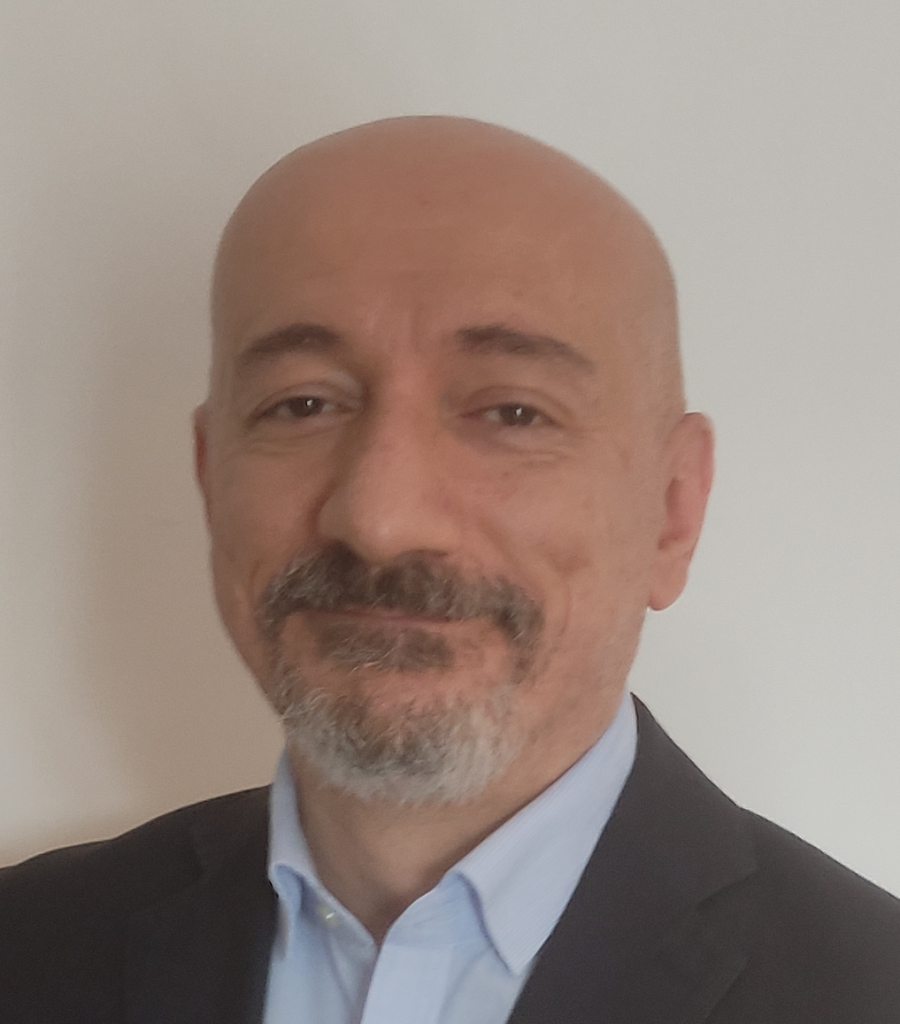
received his Ph.D. in Electronics Engineering from the University of Perugia, Perugia, Italy, in 1999. In the same year, he joined the Lehrstuhl für Hochfrequenztechnik, Technical University of Munich, Munich, Germany as a Visiting Scientist, where he worked on the modeling of waveguide structures and devices using the generalized scattering matrix technique. In 2001, he was a Guest Professor at the Fakultät für Elektrotechnik und Informationstechnik, Otto-von-Guericke University, Magdeburg, Germany. In the early stages of his career, he contributed to the enhancement of several analytical and numerical methods for electromagnetic component simulation, including the finite-element method, mode-matching technique, generalized multipole technique, method of moments, transmission-line matrix, and mode matching applied to spherical waves. In 2001, he joined the University of Perugia, where he is currently an Associate Professor and teaches the ‘Electromagnetic Fields’ course and the ‘Advanced Design of Microwave and RF Systems’ course. His main research interests include modeling and designing of waveguide components and antennas, miniaturized filters, reconfigurable filters, dielectric filters, and substrate integrated waveguide filters. He is currently studying the use of Additive Manufacturing (AM) technology for the fabrication of microwave components, considering various technologies such as Stereolithography (SLA), Lithography-based Ceramic Manufacturing (LCM), Selective Laser Melting (SLM), Fused Deposition Modeling (FDM), and PolyJet technology.
Prof. Tomassoni is the Vice-Chair of the MTT-5 Filters Technical Committee of the IEEE-MTT society. He is currently a Distinguished Microwave Lecturer of IEEE-MTT society. He served as an Associate Editor for IEEE Transactions on Microwave Theory and Techniques from 2018 to 2022. Prof. Tomassoni is the recipient of the 2012 Microwave Prize presented by the IEEE Microwave Theory and Technique Society.
The Additive Manufacturing (AM) technology, also known as 3D-printing technology, offers several interesting and attractive features, including fast prototyping, geometry flexibility, easily customizable products, and low cost (in some cases). However, using such technologies for microwave devices is not straightforward as AM has not been specifically developed for microwave components, and in most cases, some adaptation and post-processing is necessary. Furthermore, there are many AM technologies available, and it is important to understand their characteristics before selecting one.
In the presentation, an overview of the different AM technologies available will be provided. Additionally, an analysis of some of the most common AM technologies used for the manufacturing of microwave components will be conducted in more detail, with the help of several examples. Several microwave components manufactured with some of the most popular AM technologies will be shown, along with a detailed description of the manufacturing process, post-processing, and all actions necessary to make the component perform well. Furthermore, it will be shown how the flexibility of this technology allows the development of new classes of components with non-conventional geometries that can be exploited to obtain high-performing components in terms of compactness, weight, losses, etc.
Keynote Speaker 7: How to Bring 6G to Reality?
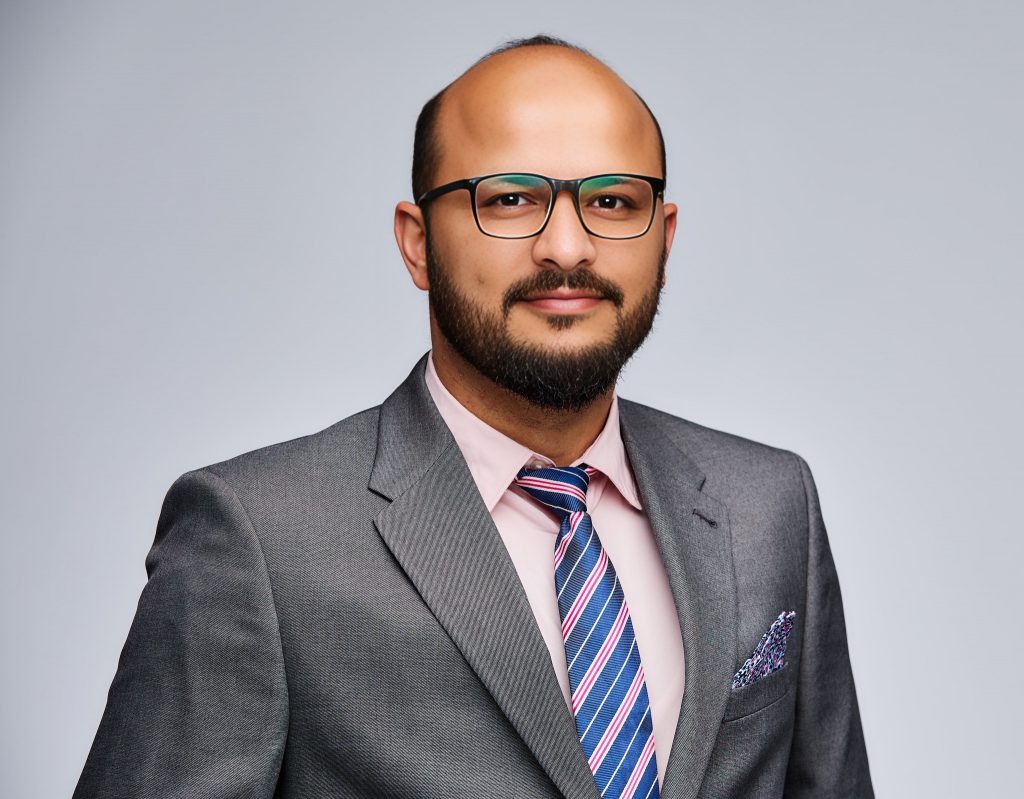
Professor of Applied Electromagnetics & Sensing with the James Watt School (JWS) of Engineering, Theme lead for Connecting People priority at JWS, executive director for Communication Sensing and Imaging (CSI) Hub and deputy theme lead for Quantum technologies in the University’s flagship Advance Research Centre at University of Glasgow, UK. He has grant portfolio of £10M+ and contributed to more than 500+ leading international technical journal (including nature portfolio) and peer reviewed conference papers, 11 books and received several recognitions for his research including UK exceptional talent endorsement by Royal Academy of Engineering, Sensor 2021 Young Scientist Award, University level Teaching excellence award in addition to coverage by various media houses including Analog IC tips, Microwaves & RF newsletters, Vertical news, Pakistan Dawn news, BBC news, Scotland TV, Fiercewireless and many other media houses. Prof. Abbasi is an IEEE senior member and is chair of IEEE AP/MTT UK, Ireland and Scotland joint chapter. He is an Associate editor for IEEE Journal of Electromagnetics, RF, and Microwaves in Medicine and Biology, IEEE Sensors, IEEE Internet of Things, IEEE open access Antenna and Propagation, IEEE JBHI and scientific reports. He was/is a committee member for IEEE APS Young professional, Sub-committee chair for IEEE YP Ambassador program, IEEE 1906.1.1 standard on nano communication, IEEE APS/SC WG P145, IET Antenna & Propagation and healthcare network. He is/was Fellow of Royal Society of Arts, industrial Fellow of Royal Academy of Engineering, Fellow of European Alliance of innovation and Fellow of Institution of Engineering and Technology
Future wireless networks are expected be more than allowing people, mobile devices, and objects to communicate with each other. The sixth generation (6G) of mobile networks are envisioned to include high data rate applications and ultra-massive, connected things. This also includes bio and nano-internet of things (IoT) tele-operated driving, unmanned mobility, haptic communications, unmanned aerial vehicles, and many more. Given the size of nano-sensors, THz frequency is proposed to do various sensing activities at this scale. However, it will be ideal to use the same radio frequency for communications as well. Furthermore, THz is also proposed as an enabler of extremely high data rate applications in 6G communications. The talk will be focused on Terahertz antenna design, Reconfigurable Intelligent Surfaces (RISs) and its role for joint communication and sensing feature of 6G.
Keynote Speaker 8: UWB HOLOGRAPHIC ELECTROMAGNETIC IMAGING FROM MICROWAVES TO THZ
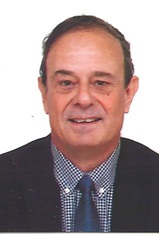
Luis Jofre-Roca (Life Fellow, IEEE) received the M.Sc. and Ph.D. degrees in electrical engineering (telecommunication engineering) from the Technical University of Catalonia—BarcelonaTech (UPC), Barcelona, Spain, in 1978 and 1982, respectively. Since 1982, he has been part of the Communications Department, Telecommunication Engineering School, UPC, first as an Associate Professor and as a Full Professor (since 1989). He was a Visiting Professor at the École Supérieure d’Electricité, Paris, France, from 1981 to 1982, where he was involved in microwave antenna design and imaging techniques for medical and industrial applications. From 1986 to 1987, he was a Visiting Fulbright Scholar at the Georgia Institute of Technology, Atlanta, GA, USA, where he was involved in antenna near-field measurements and electromagnetic imaging. From 2000 to 2001, he was a Visiting Professor at the Electrical and Computer Engineering Department, University of California at Irvine, Irvine, CA, USA, where he was involved in reconfigurable antennas and microwave sensing in civil engineering structures. Since 2003, he has been the Director of the UPC-Telefonica Chair on Information Society Future Trends. He was a Principal Investigator of the 2008–2013 Spanish Terahertz Sensing Laboratory Consolidator Project, the Research Leader of the 2017–2020 ComSense Laboratory Maria de Maeztu Project, the Academic Director of the Consortium for Future Urban Mobility (CARNET), and the Chairperson of the EIT-Urban Mobility European Association. He has authored more than 200 scientific and technical articles, reports, and chapters in specialized volumes. His current research interests include antennas, electromagnetic scattering and imaging, and system miniaturization for wireless sensing in industrial and bio-applications from microwaves to terahertz frequencies
Specifically tailored interrogating Electromagnetic Waves (EMW) produced by an illuminating antenna geometry have the capability to properly propagate and penetrate into different environments, to interact with the existing constituents and to produce scattered fields that once collected back by a receiving antenna geometry may deliver unique information about the geometric and electrical parameters of the interrogated objects and its environment. Important aspects are the choice of the frequency band, the design of the transmitting and receiving antennas and the optimization of the system sensitivity.
An overview of the main system parameters and tradeoff with regard to the sensing geometries and image quality parameters will be presented. Through numerical simulations and measurements applied to canonical as well as to complex objects, design criteria will be assessed and the potential of the UWB EMW tomographic imaging will be discussed. We will review in particular the relevance of the relation between the object size and the wavelength.
Recent applications to different Industrial, Scientific and Medical (ISM) applications will be discussed ranging from the sensing of microorganisms to the imaging of human-size objects with the use of frequencies ranging from the tenths to the hundreds of GHz respectively
Keynote Speaker 9: Microwaves on the Move: Exploring Current and Emerging Trends in Microwaves
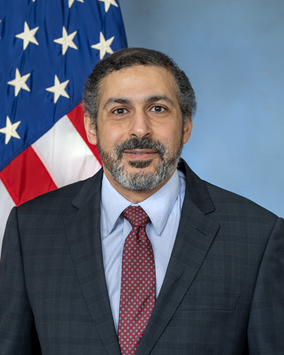
(Senior Member, IEEE) received the B.Sc. and M.S. degrees (Hons.) in electrical engineering from the University of Maryland at College Park, College Park, MD, USA, in 1990 and 1992, respectively, and the Ph.D. degree from the Massachusetts Institute of Technology (MIT), Cambridge, MA, USA, in 1996.,In 1990, he joined COMSAT Laboratories, Clarksburg, MD, USA, as an Intern, where he conducted experimental research for his M.S. thesis. In 1992, he was a Research Assistant with the Optics and Quantum Electronics Group, MIT. In 1997, he co-founded Amcom Communications Inc., Gaithersburg, MD, USA, a leading supplier of high-power microwave devices. In 2003, he joined the RF Electronics Division, Army Research Laboratory, Adelphi, MD, USA. In 2007, he joined the American University in Cairo (AUC), Cairo, Egypt, as an Assistant Professor, where he became an Associate Professor in 2009 and a Professor in 2013. In 2014, he rejoined the Army Research Laboratory. He is currently an Adjunct Faculty Member with Johns Hopkins University, Baltimore, MD, USA, and an Instructor with Besser Associates, Inc., York, PA, USA. His current research interests include compound semiconductors, thermal analysis of active devices, and millimeter-wave monolithic microwave integrated circuits.,Dr. Darwish is a member of several technical program committees, including the IEEE MTT-S International Microwave Symposium (IMS). He has organized and chaired several IMS workshops and focus sessions. He received the National Science Foundation Fellowship, the Outstanding Teaching Award at AUC, and the Outstanding Service Award at ARL. He is the Chair of the IEEE MTT-S Technical Committee on Wireless Power Transfer and Energy Conversion. He is also an Associate Editor of the IEEE Transactions on Microwave Theory and Techniques and the IEEE Microwave Magazine.
As the backbone of modern communication systems, microwaves are instrumental in fuelling the information revolution. In the past decade, we have witnessed remarkable breakthroughs and innovations in components, leading to circuits that are smaller, faster, and more energy-efficient. Among the evolving trends are new solutions to Maxwell’s equations that disrupt the traditional space-time symmetry, easing constraints on RF/microwave systems. A prime example is achieving non-reciprocity without magnetic materials, enabling broadband miniaturized circulators and integrated full-duplex radios that can potentially double network capacity. Novel time-folding power combiners have also been successfully demonstrated. Another trend is the diminishing return on gate scaling and the emergence of three-dimensional heterogeneous integration (3DHI). The 3DHI packaging is enabling the integration of diverse technologies including Si, GaAs, InP, and GaN. This is driven by the need to improve performance and yield, as well as to reduce cost and cycle time.
Additionally, novel design approaches for synthesizing filters and matching networks using machine learning, and inverse design techniques are being developed. This presentation delves into current advancements that have transformed passive and active circuits, and emerging trends that promise to overcome long-standing limitations and enable new applications.
Keynote Speaker 10: Fundamentals of RF and MM-Wave Power Amplifiers
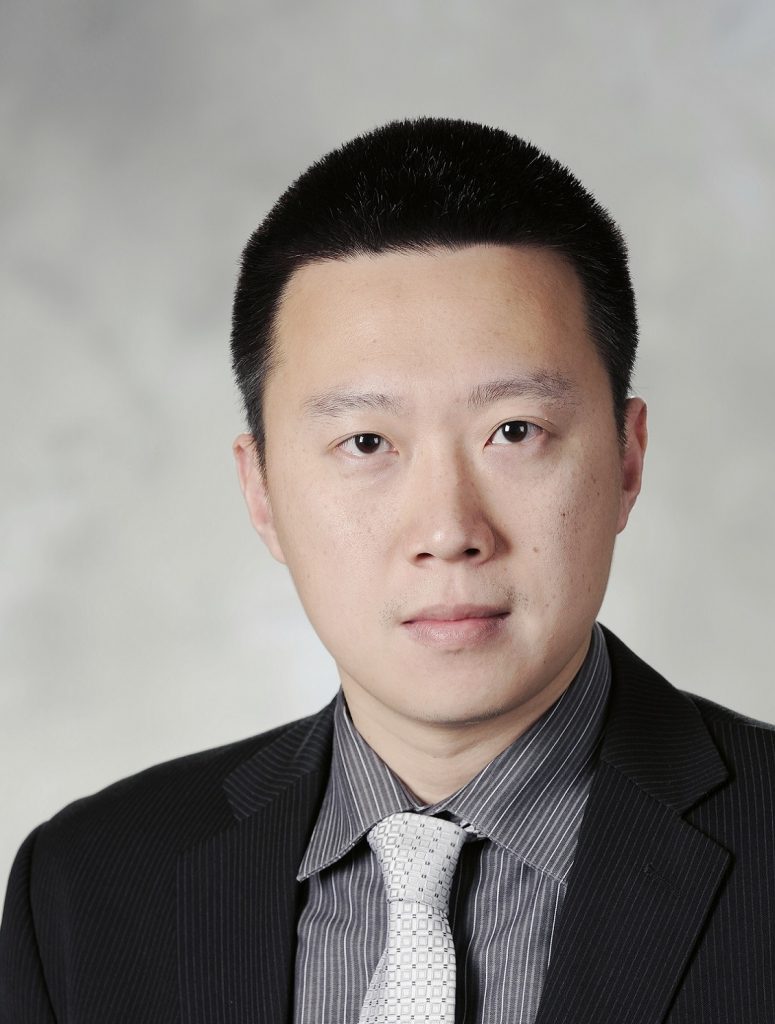
full professor and chair of electronics at Department of Information Technology and Electrical Engineering (D-ITET) of Swiss Federal Institute of Technology Zürich (ETH Zürich). He is the director of the ETH Integrated Devices, Electronics, And Systems (IDEAS) Group. Prior to that, he was an associate professor with tenure at the School of Electrical and Computer Engineering (ECE) at Georgia Institute of Technology, USA. He held the Demetrius T. Paris professorship at School of ECE at Georgia Tech. He was the founding director of Georgia Tech Center of Circuits and Systems (CCS) and the director of the Georgia Tech Electronics and Micro-System (GEMS) lab. He worked at Intel Corporation and Skyworks Solutions from 2010 to 2011. He received his M.S. and Ph.D. degrees in electrical engineering from the California Institute of Technology, Pasadena, in 2007 and 2009, respectively.
Dr. Wang is interested in innovating analog, mixed-signal, RF, and mm-Wave integrated circuits and hybrid systems for wireless communication, sensing, and bioelectronics applications. He has authored or co-authored over 250 peer-reviewed journal and conference papers.
Dr. Wang is an IEEE Fellow. He received the DARPA Director’s Fellowship Award in 2020 (the first awardee in Georgia Tech’s history), the DARPA Young Faculty Award in 2018, the National Science Foundation CAREER Award in 2015, the Qualcomm Faculty Award in 2020 and 2021, the IEEE MTT-S Outstanding Young Engineer Award in 2017, the Georgia Tech Sigma Xi Young Faculty Award in 2016, the Georgia Tech ECE Outstanding Junior Faculty Member Award in 2015, and the Lockheed Dean’s Excellence in Teaching Award in 2015.
His research group has won multiple academic awards and best paper awards, including the 2019 Marconi Society Paul Baran Young Scholar and the Best Student Paper Awards at IEEE RFIC, IMS, and CICC Conferences.
Dr. Wang was a Technical Program Committee (TPC) Member for IEEE ISSCC, RFIC, CICC, and BCICTS conferences. He is presently a TPC Member for IEEE ESSERC and EuMW Conferences. He is a Distinguished Microwave Lecturer (DML) for the IEEE Microwave Theory and Techniques Society (MTT-S) for the term of 2022-2024. He was a Distinguished Lecturer (DL) for the IEEE Solid-State Circuits Society (SSCS) for the term of 2018-2019. He was the Chair of the Atlanta’s IEEE CAS/SSCS joint chapter that won the IEEE SSCS Outstanding Chapter Award in 2014.
This talk presents a focused overview of mm-wave power-amplifier (PA) designs in silicon, including design fundamentals, advanced PA architectures, and state-of-the-art design examples. The talk will start with an introduction of PA performance metrics and their impacts on wireless systems. Next, it presents the design fundamentals of PA active devices and passive networks as well as power combining strategies. The tutorial discusses advanced PA architectures, including Doherty and Hybrid PAs, for high efficiency, linearity, and bandwidth. Further, advance and challenges of high mm-Wave PAs will be covered to address the emerging beyond-5G/6G applications. Finally, the talk will conclude with several state-of-the-art mm-wave PA design examples.
Keynote Speaker 11: Key Technological Innovations for Next generation (Terrestrial/ Submarine) Optical Transport Networks
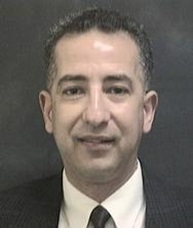
Dr. Abdelkader is a Senior member of IEEE and LEOS (Lasers & Electro Optic Society), author of 3 US patents and 13 journal papers, referee with the Journal of the Optical Society of America B and Photonics Technology Letters, and the recipient of leadership and merit awards from the MITRE corporation, CORVIS, CIENA, AT&T Bell Labs, Tyco Submarine systems (currently SubCom) and AMP Inc (currently TE Connectivity). Dr. Abdelkader has 30+ years of experience in optical networking with top-tier US network operators and equipment vendors (both established companies & start-ups), with focus on the architecture, analysis, design, modeling & simulations, test and upgrade of high-speed, Wavelength Division Multiplexed (WDM) Ultra Long Haul (ULH) terrestrial & submarine fiber optic communication networks. Dr. Abdelkader earned a B.Sc. in Electrical Engineering in 1983 from Ain Shams Faculty of Engineering, Cairo, Egypt, and M. Sc. and Ph.D. degrees in Electrical Engineering in 1988 and 1992 respectively from the University of Rhode Island, Kingston, RI, USA. Dr. Abdelkader’s current work interest includes Fiber Optic Communications Systems, Optical Networking, Open Disaggregated Networking, Multi-domain Network Automation, End-to-End Service Orchestration, Software Defined Networking (SDN) and cloud-based technologies and solutions.
Traffic carried by fiber optic communication networks continues to increase at a fast clip fueled by growing mobile, broadband, cloud, and Internet of Things (IoT) traffic demands. The network’s optical layer plays a key role as it provides scalable Transport as a Service (TaaS) to links in the higher network layers, as well as Wavelength(s) as a service to end users. Significant optical layer technological innovation continues to unfold at the component, subsystem, and system levels. Optical networks are advancing fast and making the right decision(s) about how to evolve towards the NextGen optical transport network has never been more important. Coherent optical pluggables (transponders) are increasingly capable of transporting more data over longer distances with lower electrical power consumption and are now moving from simple point-to-point data center interconnect (DCI) networks to wide-scale use in all optical networking scenarios. The move to an open optical line system is accelerating the deployment of optical pluggables from multiple vendors over the same optical line system. Reference architectures and methods for the control and management of partially disaggregated open optical networks are being deployed. Additionally, as we get closer to the Shannon limit, emerging techniques to further increase the system capacity by using space division multiplexing- SDM (in submarine systems) and by expanding the utilized fiber spectrum into the broader Super C and L- bands (in terrestrial systems), promise a 100 Tb/s capacity on a single fiber pair. This presentation will review the above key technological innovations in the context of building best-in-class terrestrial (and submarine) optical networks today that can scale to meet the capacity requirements of the next decade.
Keynote Speaker 12: Compact Circularly Polarized Stepped-Reflectarray for Broadband Enhancement
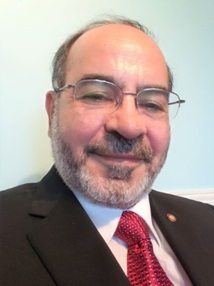
Ahmed A. Kishk received a BSc in Electronics and Communication Engineering from Cairo University, Cairo, Egypt, in 1977 and a BSc. in Applied Mathematics from Ain-Shams University, Cairo, Egypt, 1980. In 1981, he joined the Department of Electrical Engineering, University of Manitoba, Winnipeg, Canada, where he obtained his M. Eng. and Ph.D. degrees in 1983 and 1986. From 1977 to 1981, he was a research assistant and an instructor at the Faculty of Engineering at Cairo University. From 1981 to 1985, he was a research assistant at the Department of Electrical Engineering, University of Manitoba. From December 1985 to August 1986, he was a research associate fellow in the same department. In 1986, he joined the Department of Electrical Engineering at the University of Mississippi as an assistant professor. He was on sabbatical leave at the Chalmers University of Technology, Sweden, during the 1994-1995 and 2009-2010 academic years. He was a Professor at the University of Mississippi (1995-2011). He was the Center for Applied Electromagnetic System Research (CAESR) director from 2010 to 2011. He is a Professor at Concordia University, Montréal, Québec, Canada (since 2011) as Tier 1 Canada Research Chair in Advanced Antenna Systems. He was an Associate Editor of Antennas & Propagation Society Newsletters from 1990 to 1993. He was a distinguished lecturer for the Antennas and Propagation Society (2013-2015). He was an Editor of Antennas & Propagation Magazine (1993-2014). He was a Co-editor of the special issue, “Advances in the Application of the Method of Moments to Electromagnetic Scattering Problems,” in the ACES Journal. He was also an editor of the ACES Journal in 1997. He was an Editor-in-Chief of the ACES Journal from 1998 to 2001. He was the chair of the Physics and Engineering Division of the Mississippi Academy of Science (2001-2002). He was a Guest Editor of the special issue on artificial magnetic conductors, soft/hard surfaces, and other complex surfaces in the IEEE Transactions on Antennas and Propagation, January 2005. He was a co-guest editor for IEEE Antennas and Propagation and Wireless Letter on the special cluster on “5G/6G enabling antenna systems and associated testing technologies.” He was a technical program committee member for several international conferences. He was a member of the AP-S AdCom (2013-2015). He was the 2017 AP-S president. Prof. Kishk’s research interest is broad in Electromagnetic Applications. He has recently worked on millimeter-wave antennas for 5G/6G applications, Analog beamforming networks, Electromagnetic Bandgap, artificial magnetic conductors, soft and hard surfaces, phased array antennas, reflectors/transmitarray, and wearable antennas. In addition, he is a pioneer in Dielectric resonator antennas, microstrip antennas, small antennas, microwave sensors, RFID antennas for readers and tags, Multi-function antennas, microwave circuits, and Feeds for Parabolic reflectors. He has published over 465 refereed journal articles, 550 international conference papers, and 125 local and regional conference papers. He co-authored four books and 13 chapters and was the editor of eight books. He offered several short courses at international conferences. According to Google Scholar, his work was cited over 34930 with an H-index of 79 in the 9th edition of Research.com ranking of the best scientists in Electronics and Electrical Engineering; it is based on data consolidated from various sources, including OpenAlex and CrossRef. The bibliometric data for estimating the citation-based metrics were gathered on December 21, 2022. Prof. Kishk was ranked first at Concordia University, 23rd in Canada, and 401 worldwide. ScholarGPS has placed Dr Kishk in the top 0.05% of all scholars worldwide, with # 231 in Electrical Engineering, #4 in Antennas, # 5 in Dielectric, and #78 in Microwave. Prof. Kishk and his students received several awards. He won the 1995 and 2006 outstanding paper awards for papers published in the Applied Computational Electromagnetic Society Journal. He received the 1997 Outstanding Engineering Educator Award from the Memphis section of the IEEE. He received the Outstanding Engineering Faculty Member of the Year in 1998 and the 2009 Faculty Research Award for Outstanding Research Performance in 2001 and 2005. He received the Award of Distinguished Technical Communication for IEEE Antennas and Propagation Magazine’s entry, 2001. He also received The Valued Contribution Award for an outstanding Invited Presentation, “EM Modeling of Surfaces with STOP or GO Characteristics – Artificial Magnetic Conductors and Soft and Hard Surfaces,” from the Applied Computational Electromagnetic Society. He received the Microwave Theory and Techniques Society Microwave Prize in 2004. He received the 2013 Chen-To Tai Distinguished Educator Award of the IEEE Antennas and Propagation Society. In recognition, “For contributions and continuous improvements to teaching and research to prepare students for future careers in antennas and microwave circuits, Kishk is a Fellow of IEEE since 1998, Fellow of Electromagnetic Academy, and a Fellow of the Applied Computational Electromagnetics Society (ACES). He is a member of the Antennas and Propagation Society, Microwave Theory and Techniques, Sigma Xi Society, and Senior member of the International Union of Radio Science, Commission B, Phi Kappa Phi, Electromagnetic Compatibility, and Applied Computational Electromagnetics Society.
Broadband planar reflectarrays (RA) are usually achieved by designing broadband elements with a large focal-to-diameter ratio (F/D). This requires a directive feed with a small beam width, which is relatively large and heavy, causing an increase in the overall system volume. A smaller feed with wider beamwidth is required to reduce the feed size and volume. However, planar reflectarray (Planar RA) with a small focal-to-diameter ratio (F/D) suffers from limited bandwidth. The primary factor hindering the bandwidth is increasing the planar-RA spatial path delay from the center to the edge, which introduces substantial phase variations that cannot adequately compensate for the RA elements away from the design frequency. A faceted RA was proposed, but the structure became more complicated, particularly for a small F/D. Here, a new simple RA design approach is proposed to enhance the bandwidth. Planar-RA is cut to annular rings of sub-reflectarrays (sub-RAs), with the center sub-RA being circular. The sub-RAs are displaced to lower levels below the outer sub-RA and kept at the same position as the feed to reserve feed edge illumination. The presentation will provide an overview of RAs and the parameters that control their performance. The proposed Stepped-RA structure is an example of circularly polarized RA operating in the ka-band. Cross-bowtie elements are used in the planar-RA and stepped-RA with an aperture diameter of 25.25λ. Elements rotation is employed for phase compensation. The Stepped-RA reduces the relative path delay as the ray moves toward the edge. A parametric study is performed, and a simple, compact Stepped RA is designed. The performance of the Stepped-RA is compared to the Planar-RA. The two RA configurations are fabricated and measured. The Stepped-RA exhibits a matching bandwidth of 33.4 %, a 1-dB gain bandwidth of 23.2 %, a 1-dB axial ratio bandwidth of 33.4 %, and an aperture efficiency of 51 % (at 30 GHz). Based on the results, the stepped-RA 1-dB gain bandwidth is improved by 13 % over the conventional planar RA.
Keynote Speaker 13: THz Heterodyne Receivers: Challenges and Current Status

(BSEE 1985, MSEE 1986 and Ph.D 1990, University of Michigan) is a Senior Research Scientist at the Jet Propulsion Laboratory, California Institute of Technology. He joined JPL in 1990 and is currently a Group Supervisor leading research and development in submillimeter-wave applications in space. His responsibilities include developing THz components, technologies and subsystems for current and future NASA missions. These devices and components were implemented on the ozone-monitoring Microwave Limb Sounder (MLS) instrument which is still operational as well as the (Microwave Instrument on Rosetta Orbiter) MIRO instrument which represents the first submillimeter-wave receiver operational in deep-space. From 1999 he led the effort of developing broadband solid-state sources from 200 to 2500 GHz for the Heterodyne Instrument for Far Infrared (HIFI) on the Herschel Space Observatory, a cornerstone European Space Agency mission. He is an IEEE Fellow and served as the Editor in Chief for the IEEE Transactions on THz Science and Technology from 2019-2022. He is recipient of a number of NASA awards including the NASA Exceptional Technology Achievement Medal for “outstanding innovation and expertise in development and implementation of the submillimeter-wave membrane-based Schottky diodes for the HIFI Spectrometer on Herschel.” His current interests include millimeter and submillimeter-wave devices and technology, nanotechnology, high-frequency instrumentation, 3D Submm-wave systems, and development of compact, low-power heterodyne receivers for deep-space missions.
This talk will present the current progress being made in developing heterodyne receivers in the 2-5 THz range using non-cryogenic technologies. Recent work demonstrating a 2.06 THz receiver with less than 7000 K DSB sensitivity sets a new benchmark for what can be accomplished with Schottky technology. Challenges for a 4.7 THz receiver will also be discussed
